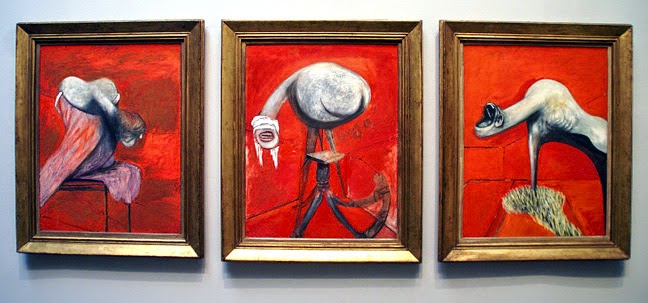"One possible psychoanalytical explanation is that Bacon conflated his own father with the symbolic Father, and so the Pope becomes a reminder of the rejection that he suffered in his family life."** Bacon's goal in depicted the Pope in this way was to show his viewers how he sees the world, as if the world did not have a God. However, once was not enough. He had to resurface the topic multiple times in his work, and show the demise of the Pope. Bacon painted more that twenty-five images of the Pope all inspired by the same painting by Velázquez. The first two paintings he did as a study of Velázquez's painting he later destroyed before it was supposed to be shown in an exhibition at the Hanover Gallery.**
The next papal series he did in 1951 were inspired by a photograph of Pope Pius XII. These were monochromatic painting that resembled his later series entitled Man in Blue. Bacon paints the Pope in a raised throne of sorts that extends him closer to the foreground and allows the Pope to be scrutinized to an even higher degree than if he were at a comfortable distance.

Bacon's "Study of three figures at the base of a Crucifixion"
*Encyclopedia Britannica. "Francis Bacon." Encyclopedia Britannica Online. http://www.britannica.com (accessed April 12, 2014).
**Arya, Rina. "Assaying the Pope: Francis Bacon's Interrogation of Religion. ." Implicit Religion 14, no. 3 (2011): 343-359. EBSCOhost (accessed Rebruary 13, 2014)

No comments:
Post a Comment